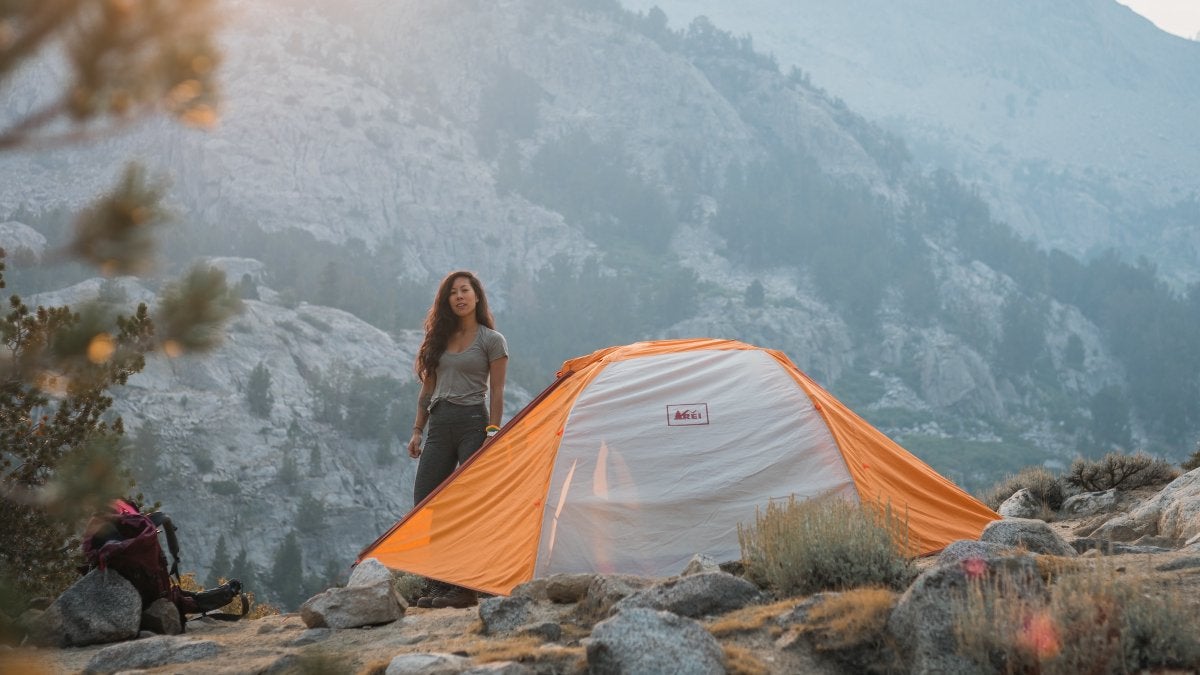No products in the cart.
Outdoor Adventure
How to Be Bold and Brave in the Outdoors
Welcome to Tough Love. We’re answering your questions about dating, breakups, and everything in between. Our advice giver is Blair Braverman, dogsled racer and author of Welcome to the Goddamn Ice Cube. Have a question of your own? Write to us at toughlove@outsideim.com.
I am the only daughter of an anxious mom, and my solo travel has always terrified her deeply. After several years of dealing with her heightened anxiety, she’s now pretty used to my extensive road trips. But I want to start adventuring more in nature. I’m excited to take my first solo backpacking trip, for example—and I feel like telling her about my plans will put us back at square one. I know I’m not responsible for her anxieties, but I feel like I have to process them for myself, too: after so many years living a life shaped by a household culture of unmitigated fear—especially the fear that the worst fate possible will come for me as soon as I dare to experience any freedom that my mother has deprived herself of—I want to teach myself to be guided by common sense, rather than superstition. How can I teach myself to be brave, and stop dwelling on guilt and anxiety?
It sounds like you’ve come to a tremendous amount of clarity and hard-earned wisdom—both about your mother and yourself. And as a person who’s often struggled with fear, I’ll admit that I relate to both of you. Nature is dangerous in certain ways, just like every part of life can be (see: driving, falling in love), so there’s no way to simultaneously go out in wilderness and avoid risk completely. The trick will be to find the balance between risk and freedom that best serves you, the place where you feel both challenged and secure, and I’m confident that with time you can.
Fear is a form of evaluation. You gauge a situation, it pings as a risk, and that response—a faster heartbeat, a rush of adrenaline—tells you to respond accordingly. To your mother, it seems, it’s also a way to protect you: by anticipating the worst possible scenarios, she may be able to avert them. But ultimately, safety is less about feelings than practices, and it’s entirely possible to stay relatively safe without the suffering that anxiety represents. (Of course, just because it’s theoretically possible doesn’t mean that it’s possible for every person, depending on brain chemistry, and other factors) and a therapist may be able to help your mom, and you, to get there. But I’m guessing from your letter that you’re well-versed in at least some of the language a therapist might apply from your situation, and are probably aware of that option if you haven’t taken advantage of it already.)
As you venture further outdoors, a key step in unlearning your mother’s fear will be recognizing that just because something’s a risk doesn’t mean you have to be afraid of it; it just means you have to account for it. For instance, salmonella is dangerous, but that doesn’t mean we have to be terrified each time we cook chicken; we just have to wash our hands. Rattlesnakes are dangerous, but most people in rattlesnake country don’t live their days in fear. They should, however, know not to stick their hands under random rocks. In fact, you probably encounter equal or greater risks in your everyday life than most people do in the backcountry. It’s just that your actions around those risks have become habits, rather than decisions. If you work on learning and building those habits around the outdoors, eventually solo backpacking can feel as comfortable as crossing the street.
I think two things can help you get there. One: don’t tell your mother. If you decide to go on a weeks-long backpacking trip, and will be away from phone reception, then certainly she might have to know; but in general, abstracting your activities (“I’ve been enjoying nature lately” rather than “I’m climbing a mountain tomorrow”) is a courtesy, not a betrayal. It’s not deception to refrain from triggering someone else’s anxiety. Your greatest duty to your mother, as it were, is to take care of yourself—and it sounds like you’re already doing a wonderful job.
Two: find good teachers. When you enter a situation with unfamiliar dangers, it can be very hard to gauge whether you’re taking proper precautions. But someone who knows nature, or who excels at the kind of activities you’re interested in, will be able to teach you things very quickly that might take a lot of time to figure out yourself. Your teachers could be hired guides or naturalists, experienced friends, or even authors (for backpacking, I love the slightly-dated-but-still-excellent The Complete Walker by Colin Fletcher)—but the point is that, when you’re a beginner, you don’t need to evaluate danger so much as you need to trust and adhere to the practices of knowledgeable people who have already evaluated it for you. Safety practices in the outdoors are generally well-established, and your teachers will be more than happy to share them with you.
I suspect that once you get out there, you’ll find yourself learning and gaining comfort far more quickly than you might imagine. Every lesson, every adventure, is a stepping stone between living with your mother’s way of seeing the world and discovering your own.
Lead Photo: Andrew Peluso on Unsplash
Source link

